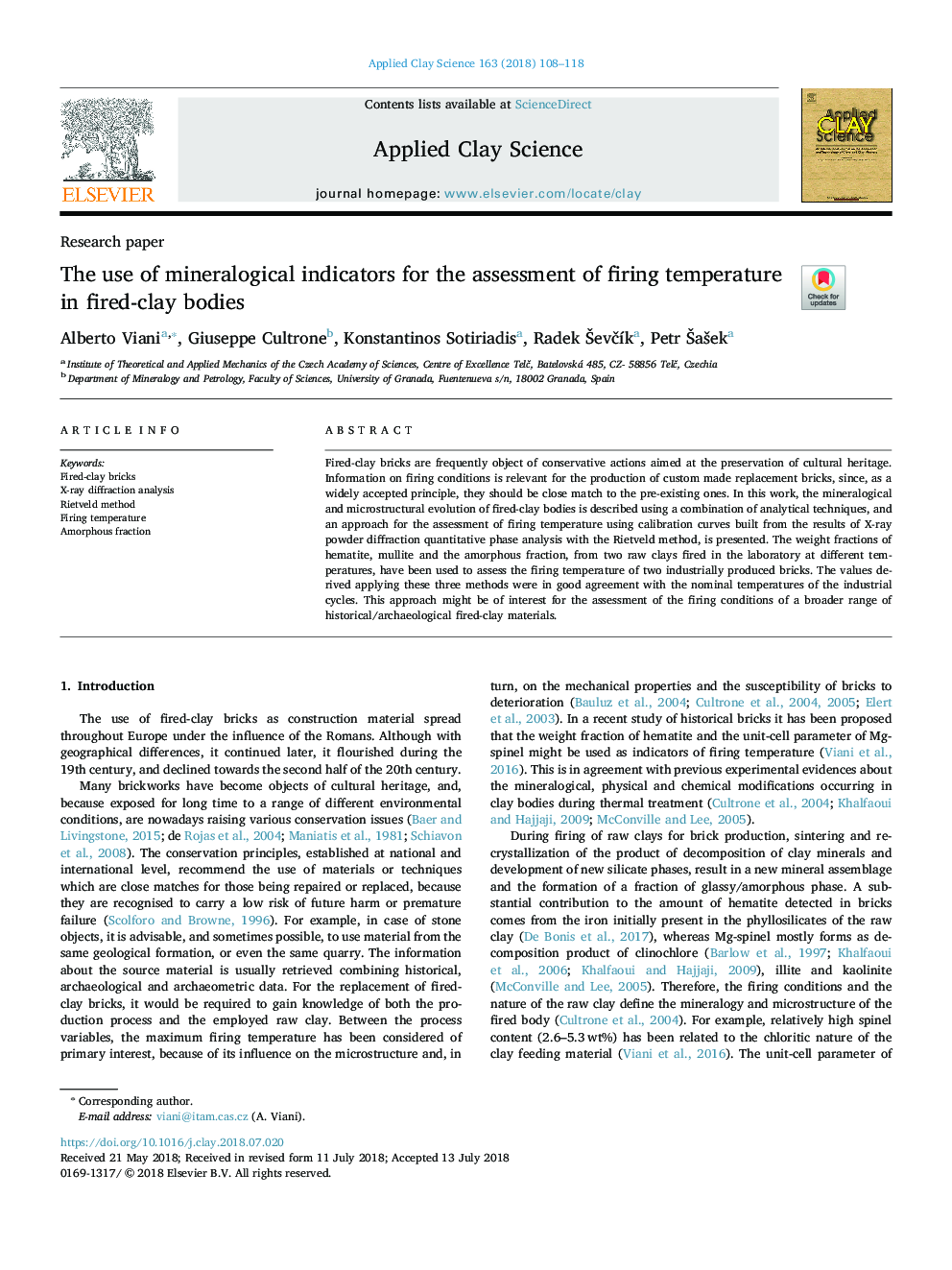| Article ID | Journal | Published Year | Pages | File Type |
|---|---|---|---|---|
| 8045599 | Applied Clay Science | 2018 | 11 Pages |
Abstract
Fired-clay bricks are frequently object of conservative actions aimed at the preservation of cultural heritage. Information on firing conditions is relevant for the production of custom made replacement bricks, since, as a widely accepted principle, they should be close match to the pre-existing ones. In this work, the mineralogical and microstructural evolution of fired-clay bodies is described using a combination of analytical techniques, and an approach for the assessment of firing temperature using calibration curves built from the results of X-ray powder diffraction quantitative phase analysis with the Rietveld method, is presented. The weight fractions of hematite, mullite and the amorphous fraction, from two raw clays fired in the laboratory at different temperatures, have been used to assess the firing temperature of two industrially produced bricks. The values derived applying these three methods were in good agreement with the nominal temperatures of the industrial cycles. This approach might be of interest for the assessment of the firing conditions of a broader range of historical/archaeological fired-clay materials.
Related Topics
Physical Sciences and Engineering
Earth and Planetary Sciences
Geochemistry and Petrology
Authors
Alberto Viani, Giuseppe Cultrone, Konstantinos Sotiriadis, Radek Å evÄÃk, Petr Å aÅ¡ek,
